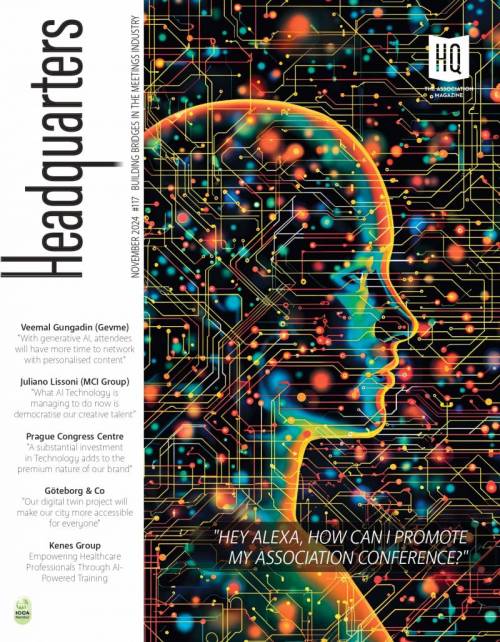ESAE voices: Competition and differentiation in the association sector

Associations today no longer have exclusivity on sector news and information, nor do they have a monopoly on high-value opportunities to connect or converse with peers. Alec Walker-Love of the European Science Communication Institute talked to ESAE members on co-opetition, collaboration and more.
Potential and existing members have a range of opportunities to get the latest information and connect with others, both online and in person, or with another national or international association with similar interests, or less formal, easily accessible online platforms and ‘pay as you play’ services and events.
For Béatrice Richez-Baum of The European Confederation of Directors Associations (ecoDa), the mission, vision and values of an association remain critical to attract new members and give a rallying point for existing ones. “Defining the right strategy is even more important now than in the past. We must clearly identify the key value creation points of an organisation,” she says. “Managers have to understand the dynamics that bring people into the association and prioritise creating ‘a community’ rather than putting heavy hierarchical structures in place”.
“There is also a new nuance to why members can identify with an association,” adds Florence Bindelle of EuropeanIssuers. “Whether they join and stay with us is also about being able to quantify their return on investment. This is a judgment made both for themselves at a personal and professional level; but also evidently for their organisation. We need to be able to decipher and respond to these different motivations – and make it tangible that they were achieved”. No easy task for association leadership, and one that means proximity and understanding of members is key to standing out. Associations must also be bolder about communicating when this is achieved.
In a previous issue of HQ Magazine, Chloe Menhinick of the International Water Association explored in detail how digitalisation is a game changer for associations - and how we can better embrace a new model of engagement and influence. Interestingly, she makes a strong case for leadership, long-term planning, a clear mission and continued focus on meeting membership needs being just as critical online as offline.
Staying with the ‘top-down’ angle, one issue that may often be overlooked is good corporate governance. “Associations should pay more attention in this area,” says Ms. Richez-Baum. “Governance contributes to the success of an association, improving leadership structures and ability to meet strategic objectives. Tangible benefits include better access to funding, grants and loans as well as enhance credibility and reputation”.
In terms of products, services and their delivery, associations also need to make bold steps to stand out. EuropeanIssuers has just launched a new mobile application that brings together and disseminates real time information published by listed companies. The IssuersHub is not just a stand-alone initiative though: “Bringing the app to life to secure its adoption and ensure a popular tool in the long term is part of it. We are launching an advisory council with high-level representatives of our companies as well as working on a dedicated conference in 2018”, says Bindelle.
With resources increasingly precious, associations are increasingly open to collaboration. Michel Ballieu, recalls a pragmatic ‘win-win’ sharing of staff resources while at the European CanCer Organisation ECCO. “As a federation of European associations, we shared staff with a small member organisation. They were hosted in our office and could only afford to hire one person. Since it’s impossible that a single individual could have all the desired competencies, so from ECCO we shared 50% of a scientific advisor, 50% of our public affairs person, 10% of a finance manager and 10% of a communication person. Together, this represented 120% Full Time Equivalent (FTE). All of them remained on ECCO’s payroll and were invoiced at real cost to the smaller association.”
Collaborations with other associations in a similar space can also extend audience reach and create greater impact. Bindelle says, “We join forces with others to improve our lobbying outreach. These can be on specific important thematic issues, such as prospectus regulation or European infrastructure market regulation. It helps that we are mainly EU-based professional associations presenting similar viewpoints.”
Conferences, workshops and other events have and always will be an essential tool for sharing content and ideas, reaching common objectives and cultivating community and networking. In recent years though, less altruistic and more opportunistic commercial event organisers are increasingly part of the market place. In the medical field, Ballieu says, “attendees always appreciated the neutrality of opinions we ensured, in addition to the direct contact and quality of relationship that the association was a guardian of.”
Bindelle adds, “It is true commercial organisers are better equipped in terms of marketing and capabilities. This is their core business after all… but for our members, consistency and quality are vital part of choosing which events to attend”.
Accessing the high-quality assets in the membership base is also a clear reason to attend ecoDa events for Ms. Richez-Baum. “It can be easy to gather academics or consultants around events - far more difficult to get high-level practitioners with genuine, real-world insights. Associations should leverage the highly respected expertise in their membership base more to produce quality events and attract members”.
Other Articles
About Us
Supported by the Union of International Associations (UIA), the International Association of Professional Congress Organisers (IAPCO) and the Interel Group, the global public affairs and association management consultancy, Headquarters Magazines serve the needs of international associations organising worldwide congresses.














